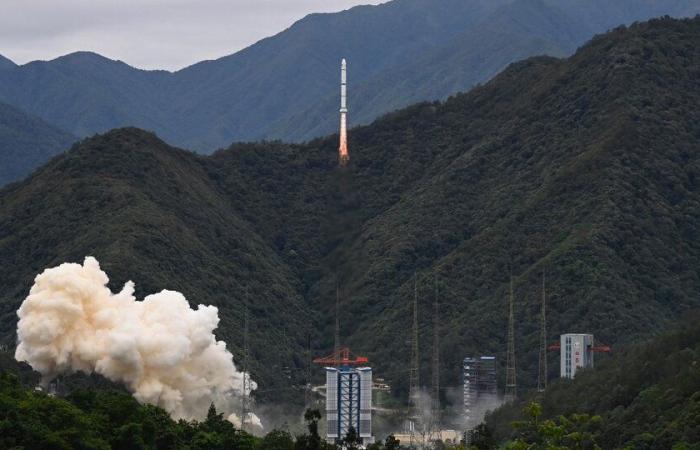
France and China They cooperated in the construction of a satelite which was launched this Saturday with the aim of detecting colossal explosions in the universe. The mission, called Svom (Space Variable Objects Monitor), searches for the so-called gamma ray bursts, luminous fossils that could contain information about the history of the universe.
The satellite, which weighs about 930 kilograms and includes four instruments (two Chinese and two French), was released “successfully” into space at 7 GMT (4 a.m. this Saturday according to Argentina’s time zone), aboard a Chinese Long March 2-C rocket from Xichang space basein the Chinese province of Sichuan, in the southwest of the country, announced the Chinese space agency CNSA.
Gamma ray bursts generally occur after massive star explosion (more than 20 times the mass of the Sun) or the compact star merger.
These flashes, the result of the most powerful explosions in the universe, They give off a colossal luminosity that can emit an energy equivalent to more than a trillion suns.
Observe these cosmic phenomena”It’s a bit like going back in timegiven that Its light takes a long time to reach Earthseveral billion years in the case of the most distant ones,” explains Frederic Daigneof the Paris Institute of Astrophysics and one of the leading experts on gamma-ray bursts.
As you travel through space, This light also crosses different gases and galaxiescarrying traces with her that They carry exceptional information about the history and evolution of the universe“They are very extreme cosmic explosions that allow us to better understand the death of some stars,” adds Daigne.
The most distant gamma-ray burst identified so far occurred only 630 million years after the big Bangthat is, the 5% of the current age of the universe.
This information also can serve to better understand the composition of space, the dynamics of gases and other galaxies.
Meanwhile, the French and Chinese satellite, placed in Earth orbit at an altitude of 625 km, will send the information to observatories on Earth. The extreme brevity of gamma ray bursts will force scientists to react very quickly to gather information.
When the Svom mission identifies one, will send an alert and, in less than five minutes, scientists will activate a network of telescopes on Earth which will be aligned precisely on the axis of the source of the outbreak, to obtain more data.
This project is the result of a collaboration between the space agencies of France (CNES) and China (CNSA), in which other scientific and technical organizations from both countries also participate.
Cooperations like this between China and the West are not very frequent at this level, especially since the United States banned NASA from any cooperation with Beijing in space in 2011.
China and France already launched together in 2018 an oceanographic satellite used for marine meteorology. And several European countries are also participating in China’s Chang’e lunar exploration program.
With information from AFP





